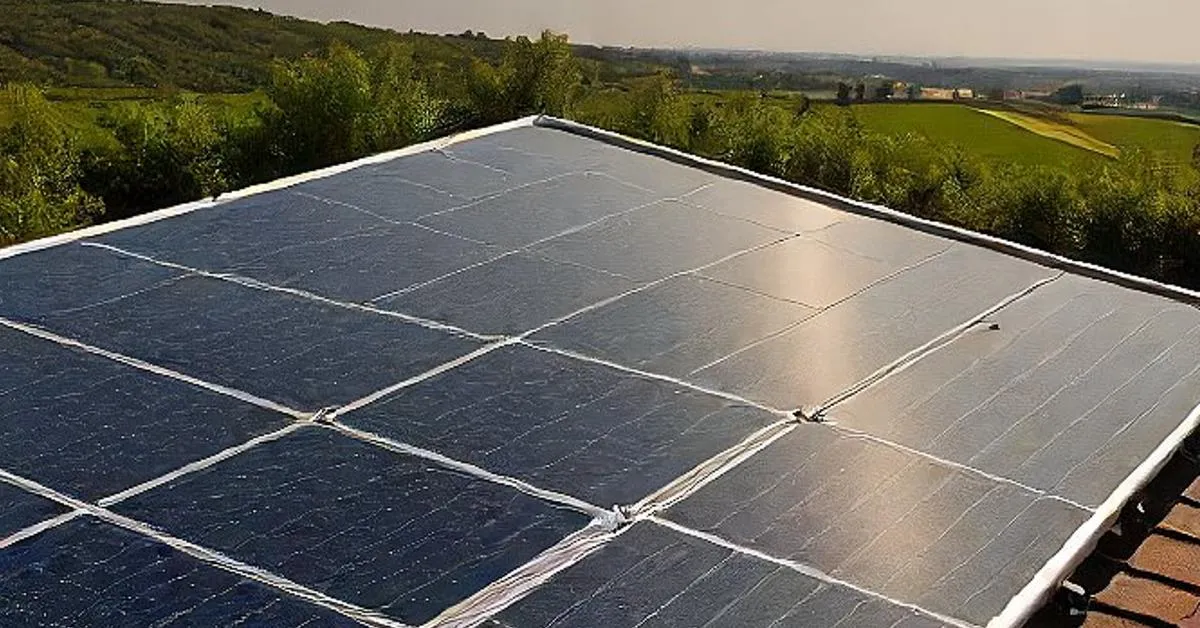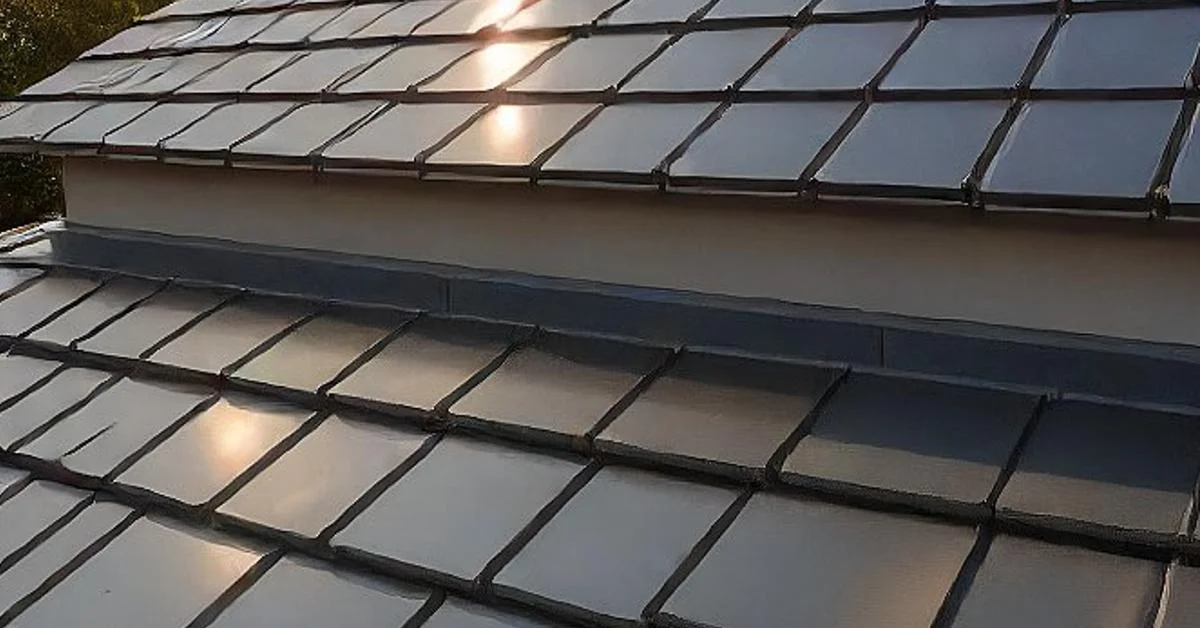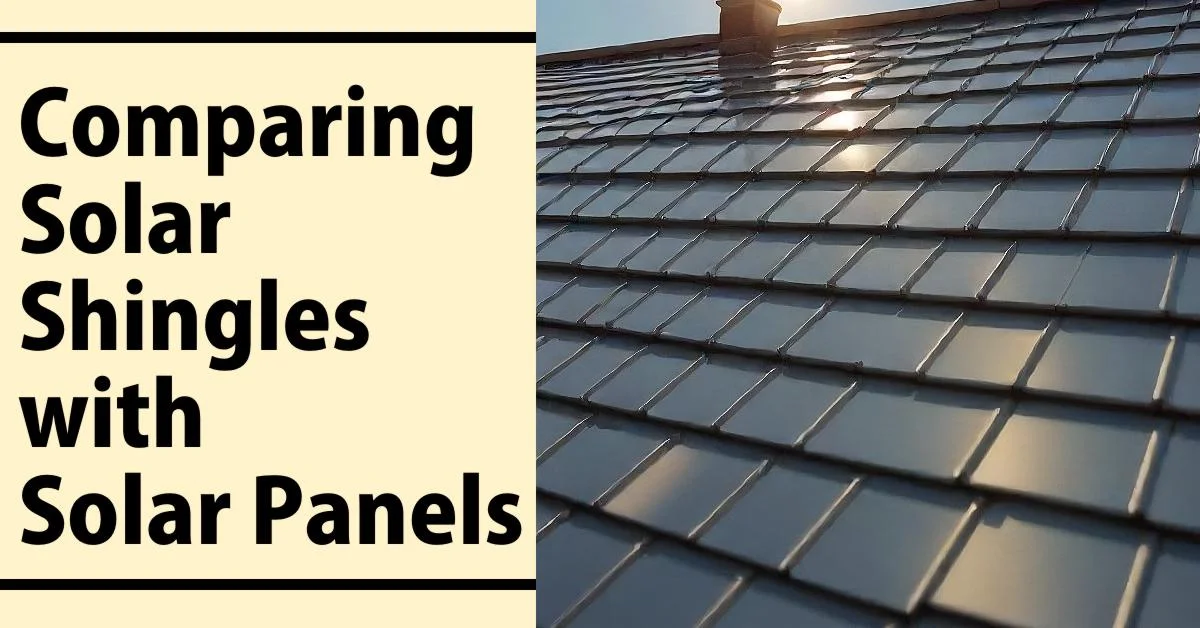While solar shingles may not be as efficient as traditional solar panels, they still offer a significant advantage over traditional roofing materials in terms of energy efficiency. By generating electricity from the sun can offset a portion of your home’s energy consumption, reducing your carbon footprint and potentially saving you money on utility bills.
Comparison with Solar Panels
While solar shingles and traditional solar panels share the same underlying technology, there are some key differences between the two. Solar panels are typically more efficient and can generate more electricity per square foot, but they also have a more industrial appearance and require additional roof mounting hardware.

Solar shingles vs. solar panels: Efficiency comparison
In terms of efficiency, traditional solar panels generally outperform solar shingles, with efficiencies ranging from 15% to 22% for most residential panels. However, solar shingle technology is continually improving, and the aesthetic and roofing integration benefits of shingles may outweigh the slightly lower efficiency for some homeowners.
Solar shingles vs. solar panels: Cost comparison
When it comes to cost, solar shingles are typically more expensive upfront compared to traditional solar panels. However, the cost difference may be offset by the seamless integration of solar shingles into your roof, eliminating the need for additional mounting hardware and potentially reducing installation costs.
Environmental Impact Comparison
Both solar shingles and solar panels have a positive environmental impact by generating clean, renewable energy and reducing reliance on fossil fuels. However, solar shingles may have an edge in terms of aesthetics and seamless integration with your home’s design.

Are solar shingles good for the environment?
Absolutely! Solar shingles are an environmentally friendly option that harnesses the power of the sun to generate electricity without producing greenhouse gas emissions or other pollutants. By reducing your home’s carbon footprint, you’ll be contributing to a more sustainable future.
Additionally, solar shingles are designed to seamlessly integrate with your roof, minimizing the visual impact on the environment and preserving the natural aesthetics of your home and surroundings. Unlike traditional solar panels, which can be seen as an eyesore by some, solar shingles blend in with your roofing, offering a sleek and modern look.
Furthermore, many solar shingle manufacturers prioritize the use of eco-friendly materials and sustainable manufacturing processes, further reducing their environmental impact. Overall, solar shingles are an excellent choice for homeowners who want to embrace clean energy while maintaining the beauty and harmony of their property with the natural surroundings.
Solar shingles vs. solar panels: Aesthetics
When it comes to aesthetics, solar shingles have a clear advantage over traditional solar panels. Solar shingles are designed to seamlessly integrate with your roof, blending in with the surrounding roofing materials and complementing the overall architectural style of your home.
Traditional solar panels, on the other hand, can have a more industrial or utilitarian appearance that may not align with the aesthetic vision of some homeowners. They often stand out prominently on the roof, which some may find visually unappealing or disruptive to the home’s design.
Solar shingles offer a more streamlined and cohesive look, as they replace a portion of your existing roofing materials rather than being mounted on top of them. This seamless integration can enhance the curb appeal of your home and maintain a uniform and visually appealing roofline.
For homeowners who value both sustainability and aesthetics, solar shingles provide a compelling solution that combines the benefits of clean energy generation with a sleek and modern appearance that complements their home’s architectural style.
Buying solar shingles:
| Factor | Solar Shingles | Traditional Solar Panels |
|---|---|---|
| Efficiency Range | 14-22% | 15-22% |
| Efficiency Leaders | Tesla Solar Roof (22%), Luma Solar (20%) | SunPower (22.8%), LG (21.7%) |
| Temperature Coefficient | -0.25%/°C to -0.39%/°C | -0.25%/°C to -0.5%/°C |
| Shading Impact | High impact on partial shading | Can use optimizers to mitigate partial shading |
| Orientation Flexibility | Must be installed following roof orientation | Can be installed at optimal tilt and orientation |
| Soiling Impact | Higher surface area exposed to debris | Easier to clean accumulated debris |
| Ventilation Impact | Integrated with roof, less heat dissipation | Mounted above roof, allowing heat dissipation |
| Efficiency Over Time | Potential for electrical issues/failure over time | Individual panel replacement easier |
| Low-Light Performance | Lower efficiency in low-light conditions | Better low-light performance |
| Installation Angle | Fixed at roof angle | Can optimize installation angle |
Durability and Maintenance Comparison
When it comes to durability and maintenance, both solar shingles and traditional solar panels are designed to withstand harsh environmental conditions and provide long-lasting performance. However, there are some notable differences to consider.
Solar shingles vs. solar panels: Durability comparison
Solar shingles are engineered to meet the same durability standards as traditional roofing materials, ensuring they can withstand extreme weather conditions such as high winds, heavy rain, and hail. Many solar shingle manufacturers offer warranties ranging from 20 to 25 years, comparable to or even exceeding the lifespan of standard asphalt shingles.
Traditional solar panels, on the other hand, are designed to be mounted on top of the roof, exposing them to more direct environmental impacts. While they are built to be durable and weather-resistant, they may be more susceptible to damage from wind, hail, or flying debris compared to integrated solar shingles.
Solar shingles vs. solar panels: Maintenance comparison
In terms of maintenance, solar shingles and solar panels share some similarities, but there are also some notable differences. Both systems require periodic cleaning to remove dirt, debris, and snow buildup, which can reduce their efficiency and performance.
However, solar shingles may have an advantage when it comes to accessibility and ease of maintenance. Since they are integrated into the roof structure, maintenance can often be performed from the safety of the roof itself, without the need for specialized equipment or roof anchors.
Traditional solar panels, on the other hand, may require more specialized equipment and safety measures for maintenance, as they are mounted on top of the roof and can be more difficult to access safely.
Additionally, solar shingles are designed to be more resistant to potential damage from foot traffic during maintenance or repairs, as they are an integral part of the roofing structure.
